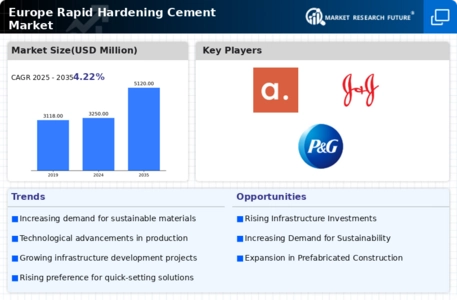Increased investment in the construction of infrastructure is driving market growth
Demand for rapid hardening cement has increased as a result of increased investment in the construction of infrastructure, including as roads, bridges, and buildings. This is because it shortens the time needed for construction, which accelerates the market CAGR. There are often strict deadlines and timeframes associated with infrastructure projects, which include building public transportation systems, bridges, highways, and tunnels. As the name implies, rapid hardening cement sets and becomes stronger rapidly. Because of the shortened curing times, quicker formwork removal, and speedier project completion, this speeds up the construction process. It's a vital benefit for keeping projects on schedule.
Additionally, infrastructure projects are frequently carried out in crowded urban settings. It is less disruptive to the surrounding surroundings to employ rapid hardening cement. It reduces traffic congestion and permits shorter road closures or detours, causing less inconvenience to the general public. Rapid hardening cement can also save money by lowering labor expenses and the requirement for extra equipment. Construction crews can proceed to the next stage of the project sooner due to the quicker drying times, which can ultimately result in cost savings.
Moreover, the usage of fast-setting cement for long-lasting repairs has increased due to the necessity of maintaining and repairing existing structures in an effective manner. Fixing important infrastructure components like roads, bridges, and buildings that may have become worn out or damaged over time is a common part of repair and maintenance operations. Fast-setting cement minimizes interruption to regular activities and public services by enabling quick and effective repairs. Additionally, there must be as little downtime as possible when completing several repair and maintenance tasks.
The capacity of rapid hardening cement to cure rapidly allows for the earlier reopening of structures to the public, minimizing the financial losses that come with closures. Furthermore, rapid hardening cement is essential when unforeseen structural damage results from accidents, natural catastrophes, or other crises. It makes it possible for disaster response teams to fix vital infrastructure quickly and effectively. Thus, driving the rapid hardening cement market revenue.














Leave a Comment